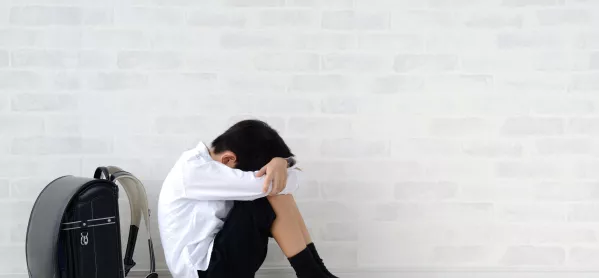- Home
- 6 signs of child anxiety as we settle back into school
6 signs of child anxiety as we settle back into school

Returning to school has been exciting for many children, especially those who may have been in lockdown for longer than others, stuck abroad due to border closures or anxious to venture further than their own house.
But we must remember that this “novelty” may well wear off and, as it does, anxiety at the strange new reality of school life, a loss of the safe environment at home and constantly changing rules may well start to take its toll.
The next few weeks are crucial and may bring out some signs of children who are struggling and whose wellbeing may not be the same as it used to be. These are some things to look for:
Pupil wellbeing: Signs of anxiety
1. Being overwhelmed by tasks
Tasks that would normally be completed without hesitation may now cause an adverse and unexpected reaction such as being upset, fidgety or frustrated.
This could be being asked to speak out loud in front of the class, tasks that come with a time limit or even something new that makes a change away from what they knew during distanced learning.
2. Changes in behaviour
You may notice some children displaying some changes in their behaviours. These behaviours may come in different forms such as hyperactivity, aggression or lack of motivation or enthusiasm.
Some children may become withdrawn from their schoolwork, have a sudden drop in the standard of work that they produce or become withdrawn from friendships or engagement within the classroom.
It’s crucial to watch for this and be alert to when it goes beyond what you may consider the norm for each individual pupil
3. Attendance
If children become anxious or start to struggle with how they feel about coming to school, there may be a change in their attendance.
Home is where they have been told to stay for the past six months in order to keep themselves and others safe.
Slowly, they may start to revert to this and their attendance may drop. Be aware of this and track absences with consideration.
4. Food and weight issues
This can happen either way; a sudden weight loss or a potential weight gain.
Relationships with food can subconsciously be a control mechanism for children who may be struggling emotionally. In the “new norm”, in which they have no or little control, their relationship with food may be a type of control.
Anxiety can be an appetite suppressant, while, on the flip side, some may react with emotional eating and increase their consumption.
With this we also need to be careful that the children aren’t just “seen to be eating” - ie, are they eating their food properly or are they effectively making it look like they are?
As such, be vigilant and pay attention to children’s behaviours at times when food is around.
5. Tiredness
We are all now spending extra time getting to and from school or work, something we haven’t done for six months. It is inevitable that people will become tired.
However, anxiety can cause disruption to sleep patterns, so we need to be extra cautious and look for the signs of tiredness in children and the issues this can cause.
There could be a simple thing, such as checking in with their parents about the child’s sleep patterns, that can be done in order to support sleep.
6. Separation Anxiety
It may sound obvious but it is really important to acknowledge the fact that children have been around parents and family all day, every day for a very long time.
Therefore it is almost a given that some of these children will find it very hard to adjust to this.
Leaving parents in the morning may be emotional, but remember even if the child stops displaying tears they may still be very upset and anxious, so always check in with them throughout the day.
What to do next?
The key thing to do, if you believe a child is exhibiting signs of anxiety, is to act through the appropriate channels.
Treat it like you would a child protection issue; the faster you act, the sooner the correct support can be offered to the child and their family resulting in a positive outcome.
Of course, we don’t need to automatically assume that the child has special educational needs or disabilities, but we do need to offer them effective support for their social and emotional wellbeing.
So, follow the protocol of your school, whether it be to report it to your school’s child protection officer or to make a social, emotional referral to the Sendco; follow the route your school suggests.
It could also be useful to record any triggers and behaviours that you have noticed. This will be helpful and possibly crucial in offering the correct support to the child.
Offering emotional support to students and letting them know they can talk about how they feel and it is OK to feel this way will help, too. Remind them that what they have been through may have been traumatic and no one can tell you how you should feel or react.
Their feelings are their own and if they need support in working through them or understanding them then that is OK, too.
Laura Pearson is a qualified Sendco and an inclusion support teacher at Deira International School, Dubai
Keep reading for just £1 per month
You've reached your limit of free articles this month. Subscribe for £1 per month for three months and get:
- Unlimited access to all Tes magazine content
- Exclusive subscriber-only stories
- Award-winning email newsletters
